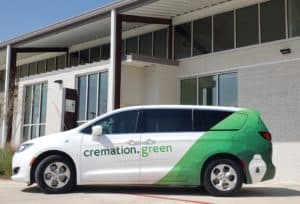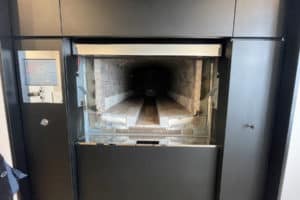Introduction to Alkaline Hydrolysis
Alkaline hydrolysis is a method of body disposition that offers a gentler alternative to fire-based cremation. It’s often called water cremation, bio-cremation, or aquamation. This process involves using a solution of water and alkali to break down the body into its chemical components. The idea here isn’t new, but its adoption is growing as people look for more eco-friendly options than traditional methods. In simple terms, the body is placed in a vessel where it’s gently circled by a warm alkaline water mix. Over a few hours, this solution accelerates the natural decomposition process, leaving behind bone remains and a sterile liquid. The bones can then be turned into ash, similar to cremation, and returned to the family. The process emits no harmful greenhouse gases and uses less energy, making it a kinder choice for the planet. So, alkaline hydrolysis is about returning to the earth in the most gentle and eco-conscious way possible.
How does alkaline hydrolysis work?
Alkaline hydrolysis might sound complicated, but it’s quite straightforward. Think of it as using water instead of fire to return a body to nature. Here’s the breakdown: The body is placed in a stainless steel vessel. Then, a mix of water and a strong alkali solution, usually potassium hydroxide, is added. The vessel is then heated, but not to the point of boiling, and under high pressure, which speeds up the process. This combination of heat, water, and alkali breaks down the body’s tissues and bones, turning them into a sterile liquid and a soft, white bone residue. The liquid is bio-safe and can be returned to the earth through the water treatment system, while the bone residue, resembling ash from traditional cremation, can be returned to the family. This process is gentle on the body and the planet, offering a sustainable option that doesn’t emit carbon or use up valuable land space.
Environmental benefits of choosing alkaline hydrolysis
Choosing alkaline hydrolysis over traditional cremation methods has a softer impact on our planet. Here’s why: this process cuts down on carbon emissions significantly. While traditional cremation releases carbon dioxide and mercury into the atmosphere, alkaline hydrolysis uses water and an alkali solution to break down the body, resulting in a much smaller ecological footprint. It consumes less energy, about one-fourth of what’s needed for flame-based cremation. Plus, there’s no need for burning fossil fuels, making it a greener option. The byproduct is a sterile liquid that safely returns to the water cycle, causing no harm to the environment. This method reduces the strain on cemetery space too, as it allows for a more sustainable way to handle remains. In simple words, if you’re looking for an eco-friendly choice, alkaline hydrolysis is worth considering.
Comparing alkaline hydrolysis and traditional cremation
Alkaline hydrolysis and traditional cremation offer two pathways for after-life care, but they’re quite different. Let’s dive into them. First off, traditional cremation burns the body at high temperatures to reduce it to ashes, using flames and intense heat. It’s quick, taking about 2 to 3 hours, but it’s not exactly gentle on the environment. A good amount of carbon dioxide gets released into the air, adding to pollution. Now, alkaline hydrolysis, that’s a softer touch. It uses water and a strong alkali solution to break down the body. Instead of flames, it’s a chemical process at lower temperatures. It still ends with remains being returned to families, much like ashes, but it’s a process that’s more environmental. It uses less energy and releases no emissions. The time? About 4 to 16 hours, so it’s a bit longer, but the kindness to Earth is worth it. Also, fewer places offer alkaline hydrolysis compared to cremation, so availability is something to consider. Cost-wise, they’re in the same ballpark, giving folks a choice that aligns with their values and wishes.
Legal status and availability
Alkaline hydrolysis is not legal everywhere. As of now, it’s allowed in some states in the USA but not all. The rules can be tricky and vary a lot from one place to another. For instance, in places where it’s legal, there might still be rules on how it’s done or where the remains can go. It’s gaining popularity as a greener alternative to cremation, but it hasn’t been embraced everywhere yet. If you’re thinking about alkaline hydrolysis for yourself or a loved one, the best first step is to check the laws in your area. This could mean talking to a funeral home that offers it or looking up state laws online. Remember, just because it’s not available where you live now doesn’t mean it won’t be in the future. Laws are changing as more people learn about and ask for this method.
The process of alkaline hydrolysis
Alkaline hydrolysis, also known as water cremation, turns the body into ashes using a solution of water and potassium hydroxide. The body is placed in a stainless steel vessel. This mix then gently breaks down the organic material, leaving behind only the bones. Here’s the simple breakdown: First, the body is placed in a pressurized vessel. Then, water and lye are heated and circulated, speeding up the natural decomposition process without flames. What usually takes years in the soil, takes just a few hours in this process. After everything else is broken down, the bones are left. They are then dried and ground into a white, fine powder, similar to what you get from traditional cremation. This method is seen as an eco-friendly alternative because it uses less energy and emits fewer pollutants compared to conventional cremation.
Cost comparison with traditional methods
When looking at the costs, alkaline hydrolysis often comes out as slightly more expensive than conventional cremation, but it’s not by a huge margin. The price tag for alkaline hydrolysis typically ranges between (1,500 to )4,000. In comparison, traditional cremation costs about (1,000 to )3,000. However, these numbers can fluctuate based on where you live and the funeral home you choose. The reason alkaline hydrolysis might be a bit pricier is its lower environmental impact and the specialized equipment it requires. Though it’s a newer method, its benefits might justify the extra cost for some, offering a more eco-friendly option than its traditional counterpart. So, when thinking about the cost, consider not just the dollar amount but also what value and peace of mind the method might bring to you and your loved ones.
Myths and misconceptions
Many folks hear “alkaline hydrolysis” and get the wrong idea, thinking it’s unnatural or even disrespectful. Let’s set the record straight. First off, the myth that it’s not “as respectful” as traditional cremation is just that, a myth. Alkaline hydrolysis is simply a gentle process that uses water and an alkali solution to speed up the natural decomposition that occurs after death. It’s as dignified as any other after-death care. Another common misconception is that it’s a complicated process. In truth, it’s straightforward and cleaner than fire-based cremation, with fewer emissions. And about the belief that it’s a new, untested method? Not at all. Alkaline hydrolysis has been around since the late 1800s and has been used for years in the medical field before making its way to funeral care. So, while it might sound high-tech or unfamiliar, it’s a well-established, eco-friendly choice for those looking to leave a lighter footprint.
Choosing the right provider for alkaline hydrolysis
Picking the right provider for alkaline hydrolysis means looking into a few key things. First, not all places offer it, as it’s newer compared to traditional cremation. Start by checking which local funeral homes or cremation services have alkaline hydrolysis available. Next, experience counts. Ask how long they’ve been providing this service and about the staff’s training. You want someone skilled handling your loved one’s final journey. Price is also a big deal. Costs can vary, so get quotes from a few providers to compare. Don’t forget to ask what’s included in the price to avoid unexpected fees later. Lastly, it’s about feeling right. Visit the place, meet the staff, and see if you’re comfortable with them. Choosing someone to trust with a loved one’s aftercare is big, so go with your gut feeling after checking the facts.
Final thoughts: The future of alkaline hydrolysis in funeral services
As we look ahead, alkaline hydrolysis stands as a noteworthy shift in how we approach the end-of-life rituals. Its gentle environmental footprint, combined with a process that’s less harsh than flame-based cremation, positions it not just as an alternative, but potentially as the future norm in funeral services. The method, often seen as a more natural return to the earth, aligns well with growing environmental concerns and could see a rise in adoption as awareness spreads. However, the expansion of alkaline hydrolysis does face hurdles, mainly in the form of legal acceptance and public perception. Not all states have laws allowing this process, but the trend is gradually moving in favor of wider acceptance. As societies become more eco-conscious, the demand for such eco-friendly options is likely to increase, potentially making alkaline hydrolysis a common choice for those planning for the inevitable. This shift could not only change the way we say goodbye but also how we think about our final impact on the planet.







